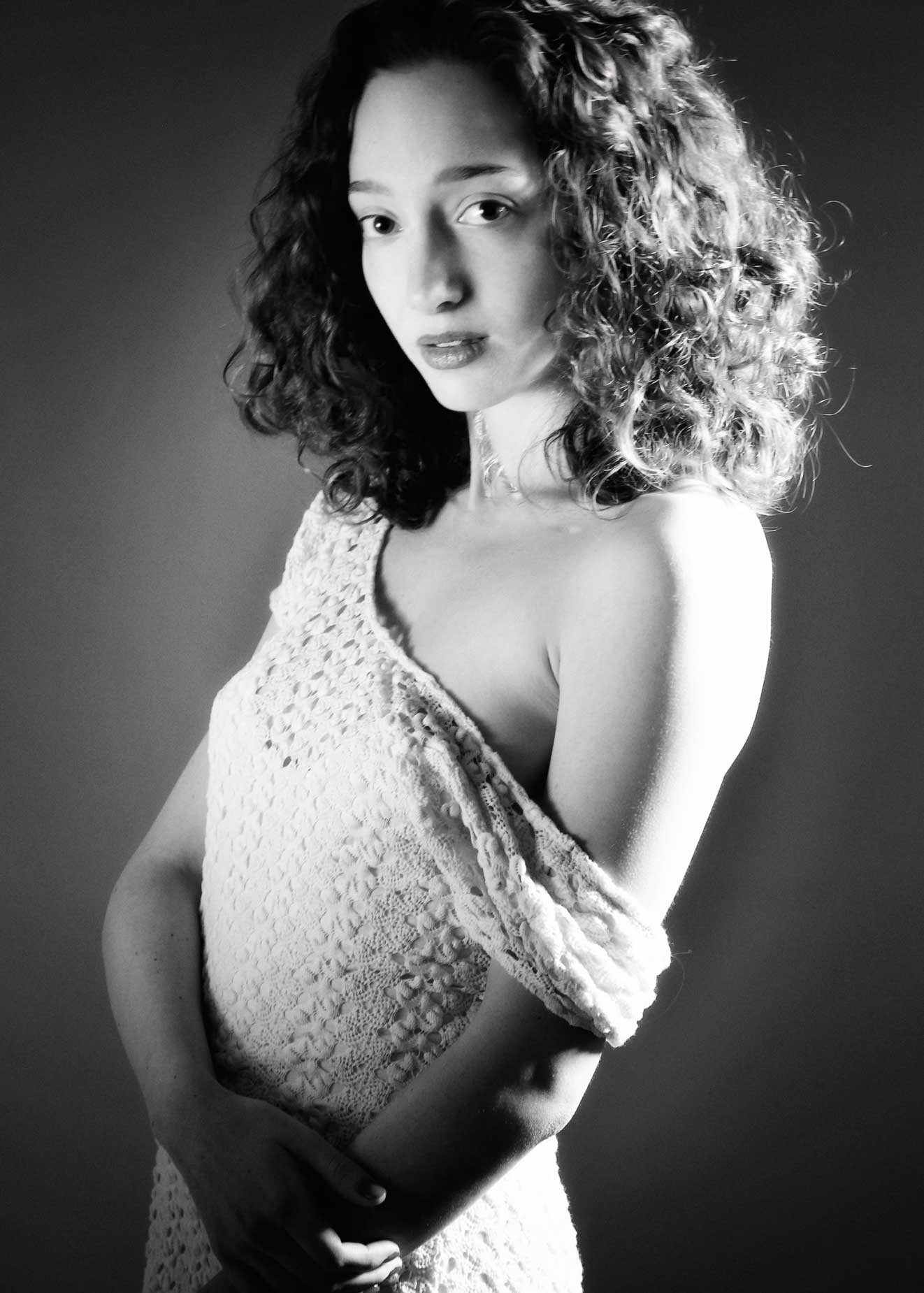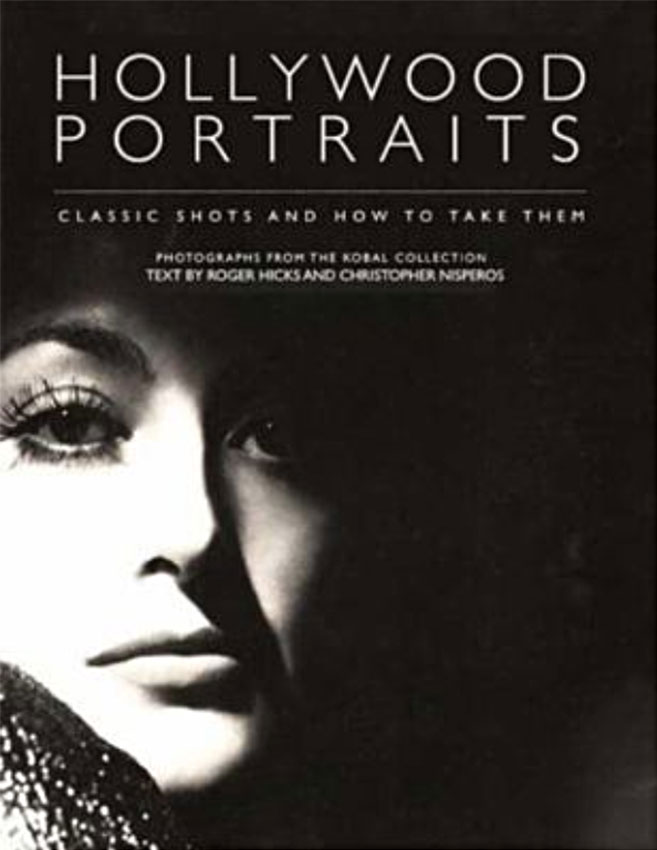It’s #anythingcanhappenday today on my blog and you have noticed that I’ve increased the number or glamour and portrait-related posts. This is a genre of photography that I’m passionate about and the last four books I wrote were about portrait and glamour photography. I strive to keep a balance of subject matter on this blog and for some reason Anything Can Happen Day seems to be a perfect place for me to talk about my passion.
Today’s Post by Joe Farace
“I’ve been forty years discovering that the queen of all colors is black.”– Henri Mattise
 Some black and white images, such as landscapes have more drama when visualized in monochrome. Without a blue sky to distract a viewer, clouds “pop” creating a more exciting look, I think this is particularly true for infrared landscape photography.
Some black and white images, such as landscapes have more drama when visualized in monochrome. Without a blue sky to distract a viewer, clouds “pop” creating a more exciting look, I think this is particularly true for infrared landscape photography.
The use of color can sometimes confuse a viewer by distracting their eyes from focusing on the image’s real subject, This can be especially true in portraiture including glamour photography, which the featured image is…sorta, kinda.
Old Days, New Times
Black and white photography is a wonderful media for creating intimate portraits because the lack of color simplifies the image, causing the viewer to focus on the photograph’s true subject —their face—instead of their clothing or surroundings.
There are many ways a photographer can produce black and white digital images. You can capture the portrait in color and then convert the image file to monochrome using software such as the Silver Efex Photoshop-compatible plug-in I used for this portrait of Laura May Bachmayer. You could also shoot black and white images directly in-camera using the camera’s monochrome (JPEG) setting but what if you change you mind later? (This has happened to me so many times, which is why I now prefer to shoot in RAW+JPEG mode, capturing the JPEG in monochrome.) Then there’s the nostalgia factor.
Most 1930’s-1040’s Hollywood portraits were shot in black and white using large format cameras often with high contrast lighting produced by using Fresnel lights. These kind of lights have a Fresnel lens up front that focuses and directs the light in a specific direction. With Fresnel lights, hair and skin highlights can often be overexposed. These portraits were usually made with long focal length lenses that were shot wide open to produce shallow depth-of-field. Hollywood portrait masters, such as George Hurrell, used all of these techniques to create their trademark look.
 How I made this portrait: The lighting for this portrait of aspiring model Laura May Bachmayer was produce by a 12×12-inch daylight-balanced LED light panel that was placed at camera right with no diffusion in place. Some models have a problem with the harsh light that’s produced by LED lighting and while barn doors were used to narrow the lighting for this portrait. Ms. Bachmayer had no problems with it. A 32-inch reflector was placed at camera left. She was photographed against a 5×7-foot Savage Photo Gray Infinity backdrop. The portrait was made with a Canon EOS 60D and EF-S 15-85mm f/3.5-5.6 IS USM lens (at 61mm) with an Av exposure of 1/15 sec at f/5.6 and ISO 800 with a plus two-thirds stop exposure compensation.
How I made this portrait: The lighting for this portrait of aspiring model Laura May Bachmayer was produce by a 12×12-inch daylight-balanced LED light panel that was placed at camera right with no diffusion in place. Some models have a problem with the harsh light that’s produced by LED lighting and while barn doors were used to narrow the lighting for this portrait. Ms. Bachmayer had no problems with it. A 32-inch reflector was placed at camera left. She was photographed against a 5×7-foot Savage Photo Gray Infinity backdrop. The portrait was made with a Canon EOS 60D and EF-S 15-85mm f/3.5-5.6 IS USM lens (at 61mm) with an Av exposure of 1/15 sec at f/5.6 and ISO 800 with a plus two-thirds stop exposure compensation.
The image was converted to monochrome with Silver Efex using their Neutral preset and the Agfa APX Pro 100 film simulation. Some vignetting was added using Silver Efex before applying the Glamour Glow filter from Color Efex with its Glow Warm slider bumped a little bit to add some warmth ala Agfa Portriga paper from back in the day. Trivia: For his landmark 1979 book, In the American West, Richard Avedon used Portriga Rapid, a double-weight, warm tone fiber-based darkroom paper that was manufactured by Agfa.
When Shooting with LEDs: Your eyes automatically adjust for any missing color bands or spikes that are found in some inexpensive LED lighting systems. But your camera will capture all of these omissions and defects resulting in more time spent in Photoshop (or whatever) trying to get the color “right.” Sometime you just can’t get it right. I’ve found that a spectroscope can be useful for measuring the actual quality of LED studio lighting. It lets me visually inspect a light source’s spectrum to see any peaks and missing color bands. To see what the output from LED lights actually looks like, I’ve been using a Rotolight Spectroscope. This device is similar to the kind of spectroscopes that are used by rock and gem collectors to analyze the quality of light being reflected by a stone. As an alternative, these spectroscopes are also available on eBay at affordable (and some not-so-affordable) prices.
A Reminder: For perspectives on a wealth of other photo-related topics, please check out my YouTube podcast with Barry Staver. We just ‘posted the most recent podcast and will be recording a new podcast real soon now.
 With Hollywood Portraits, my late friend Roger Hicks along with Christopher Nisperos created a landmark book about recreating this style of portraiture. The book includes lighting diagrams that deconstruct the setups that were used for many classical Hollywood portraits and translates that into replicating it with modern lighting equipment.
With Hollywood Portraits, my late friend Roger Hicks along with Christopher Nisperos created a landmark book about recreating this style of portraiture. The book includes lighting diagrams that deconstruct the setups that were used for many classical Hollywood portraits and translates that into replicating it with modern lighting equipment.
Used copies of Hollywood Portraits are available on Amazon for around forty bucks, as I write this. If you want to get started making these kinds of images, this book is the best place to start.